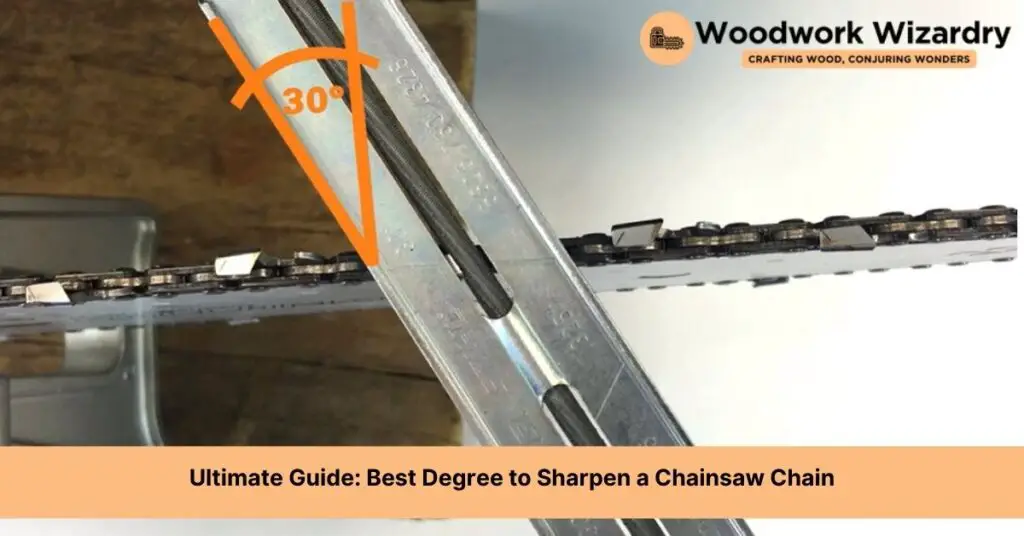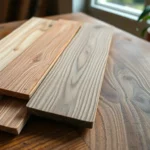We’ve all been there, standing in front of a stubborn piece of wood, chainsaw in hand, only to realize our tool isn’t cutting as smoothly as it should. It’s a frustrating experience that can set back our work and dampen our spirits. But don’t worry, we’re here to guide you through the process of getting that chainsaw back in top shape. Sharpening a chainsaw chain is an essential skill for anyone from the professional arborist to the weekend warrior tackling yard work.
Choosing the best degree to sharpen your chainsaw chain might seem daunting at first. With the variety of chains and angles out there, it’s easy to get lost in the details. But we’ve got your back. In this article, we’ll break down everything you need to know about finding the perfect angle to bring your chainsaw chain back to life. Let’s dive in and turn those cutting woes into a thing of the past.
Understanding Chainsaw Chain Sharpness
In navigating the complexities of chainsaw maintenance, one of the most critical aspects we encounter is ensuring the chain’s sharpness. A chainsaw’s efficiency hinges on the sharpness of its chain, dictating both the speed and quality of the cut. Chains that are not sharpened correctly can result in uneven cuts, increased physical effort by the user, and heightened wear and tear on the chainsaw itself.
Chainsaw chain sharpness is not just about having a sharp edge. It involves the precise angling of the chain’s teeth to optimize the cutting process. Each tooth on a chainsaw chain consists of a cutting edge that does the actual wood cutting and a depth gauge that determines the thickness of the wood chip removed. Getting the angle right during sharpening is paramount for the teeth to work efficiently.
The most common angles for sharpening chainsaw chains range between 25 to 35 degrees, depending on the chain type and the tasks it’s used for. For example, a 25-degree angle is often recommended for general wood cutting, offering a good balance between sharpness and durability. In contrast, a more acute angle might be needed for softer wood to ensure cleaner cuts, while harder woods might require a slightly blunter angle for increased edge retention.
Moreover, consistency in filing angle across all teeth is crucial for maintaining a balanced and effective cutting action. Varying angles can lead to an uneven cutting experience and potentially damage the chainsaw. Using tools like a filing guide can help in achieving this uniformity, ensuring that all teeth are sharpened to the same angle and depth.
Understanding the specifics of chainsaw chain sharpness, including the angle of sharpening, plays a foundational role in achieving optimal performance and longevity from your chainsaw. By recognizing the importance of both the degree of sharpness and the uniformity across the chain, we can ensure more efficient, safer chainsaw operation, laying the foundation for smoother cuts and a more enjoyable cutting experience.
Different Degrees Explained for Sharpening a Chainsaw Chain
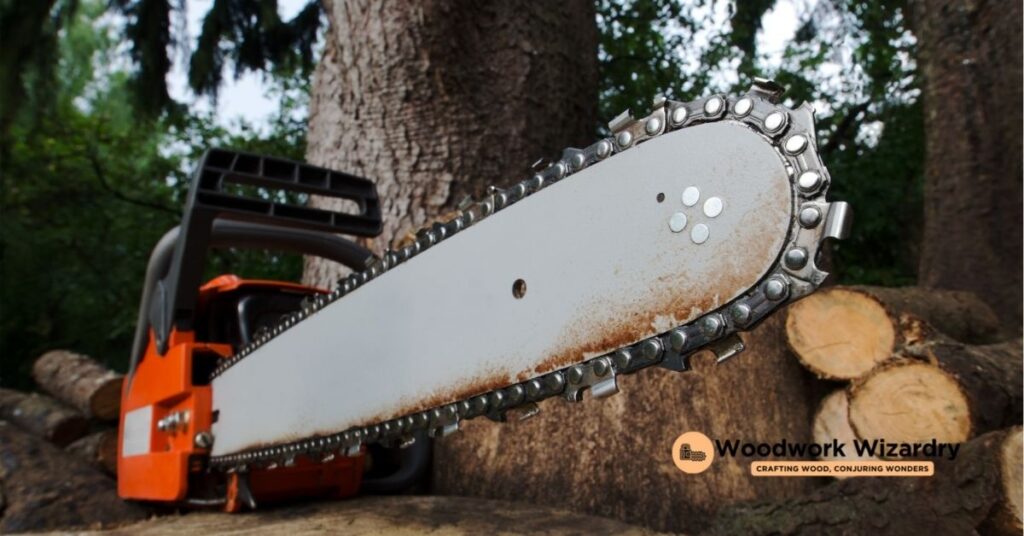
After understanding the importance of maintaining the sharpness of a chainsaw chain and the role specific angles play, it’s crucial to delve into the degrees of sharpening in more detail. These angles, typically ranging between 25 and 35 degrees, are not arbitrary. Each serves a purpose, catering to different cutting needs and types of wood. By exploring the different degrees, we aim to provide a clearer understanding of how they affect the performance of a chainsaw.
- 25 Degrees: This angle is perfect for cutting most types of wood and is considered the standard. Chains sharpened at 25 degrees offer a good balance between sharpness and durability, making them ideal for general-purpose cutting. They tend to slice through softwood effectively while still being tough enough to handle hardwood.
- 30 Degrees: Sharpening at 30 degrees, chains gain an aggressive edge, suited for professional use where efficiency is key. This angle allows for faster cutting but may require more frequent sharpening due to the aggressive nature of the cut. It’s particularly good for hardwood or for situations requiring quick, deep cuts.
- 35 Degrees: Reserved for special situations, a 35-degree angle provides a very aggressive edge that’s great for cutting in cold weather conditions or for very hard wood. However, this angle can lead to faster wear and tear on the chain, making it less popular for general use.
- 10-15 Degrees: Rarely used, but worth mentioning, are angles between 10 to 15 degrees. These angles are often applied to chains designed for specific tasks such as carving. Chains sharpened to these angles are delicate and require precise control, making them unsuitable for general cutting tasks.
Choosing the right degree for sharpening a chainsaw chain depends on the user’s specific needs, including the type of wood they’re cutting and the cutting speed they desire. Regardless of the angle chosen, ensuring consistency across all teeth is paramount for optimal performance. Using tools like filing guides can aid in maintaining uniform angles, thereby enhancing the cutting experience.
Tools and Equipment for Sharpening a Chainsaw Chain

Following our discussion on the importance of choosing the right degree for sharpening a chainsaw chain and its impact on performance, let’s delve into the essential tools and equipment required to maintain that sharpness. Sharpening a chainsaw chain requires precision, and having the right set of tools can make this task more efficient and effective.
- Files and File Holders: Files are at the heart of chainsaw sharpening. Typically, round files are used to sharpen the cutting edges of the chain teeth, with the size of the file depending on the chain’s pitch. A file holder or guide helps maintain the correct angle and depth when filing, ensuring uniform sharpness across all teeth.
- Filing Gauge: A filing gauge is crucial for checking and maintaining the right depth settings. It ensures that the cutting teeth are not too high, which could hurt the chainsaw’s performance.
- Bench-Mounted Chain Sharpeners: For those looking for more precision and ease, bench-mounted chain sharpeners provide a sturdy and consistent sharpening solution. These devices can adjust to different angles, allowing for precise sharpening according to the chain specifications.
- Electric Chain Sharpeners: Electric sharpeners offer convenience and speed, sharpening chains in just a few minutes. With settings for angle and depth, these machines provide a uniform sharpen through mechanical assistance.
- Bar-Mounted Guides: Bar-mounted guides attach directly to the chainsaw bar and guide the file at the correct angle. They’re handy for on-the-go sharpening, ensuring that your chainsaw maintains optimum cutting efficiency even while working in the field.
Equipping ourselves with these tools not only aids in achieving the perfect degree of sharpness for our chainsaw chains but also ensures the longevity and durability of the chainsaw itself. Whether opting for manual files or electric sharpeners, the key is using these tools correctly and consistently. Matching the tool to our specific needs, based on the previously discussed angles and wood types, guarantees we can tackle any cutting task with precision and ease.
Step-by-Step Guide to Sharpening Your Chainsaw Chain
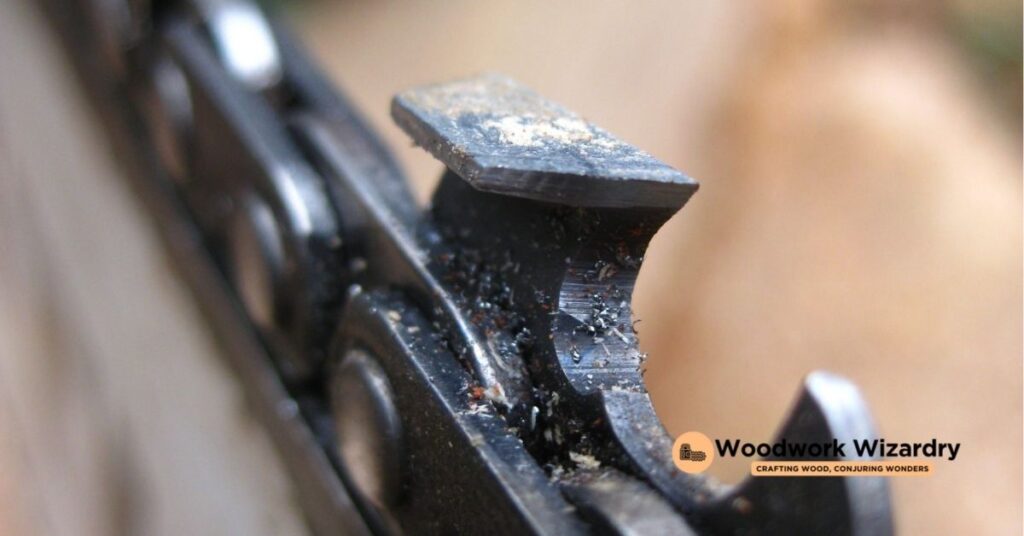
Having laid out the importance of sharpening chainsaw chains at precise angles and the tools necessary for the job, let’s dive into how to effectively use these tools. Sharpening your chainsaw regularly not only enhances cutting efficiency but also extends the chain’s lifespan. Here’s a simple, concise guide that’ll have your chainsaw cutting like it’s fresh out of the box in no time.
- Safety First Secure the chainsaw. Whether clamping it to a workbench or just ensuring it’s on stable ground, safety always comes first. Don’t forget to wear gloves to protect your hands during the process.
- Identify the Leading Cutter Locate the leading cutter— the shortest cutter on the chain, as all teeth should match its length for uniformity. This serves as your starting and reference point.
- Set Your File Ensure you’re using the right size of round file for your chain’s pitch, fitting it into a file holder at the correct angle, typically between 25 to 35 degrees, or 10 to 15 degrees for special tasks. Position the file against the cutter, maintaining the specified angle.
- Sharpen Cutters File each cutter with smooth, consistent strokes, pushing the file away from your body. Work on every second tooth—those facing the same direction. Ensure each cutter receives the same number of strokes to maintain uniform sharpness.
- Switch Sides After completing one set of cutters, rotate the chainsaw to access the other side. Adjust your filing stance to maintain the angle and file the remaining cutters, ensuring each one is equally sharp.
- Check Depth Gauges Use a depth gauge tool and file to adjust the height of the depth gauges, ensuring they are not too high. This impacts the cutting efficiency and safety of your chainsaw.
- Inspect and Test Examine your work for uniform sharpness and correct angles on all teeth. If satisfied, give your chainsaw a test run on some wood, adjusting any cutters if necessary for optimal performance.
There you have it, a simple yet comprehensive guide to sharpening your chainsaw chain. With these steps, users can ensure precise cuts and maintain their equipment in top-notch condition, ready for any task that comes their way.
Professional Tips for Maintaining Chain Sharpness
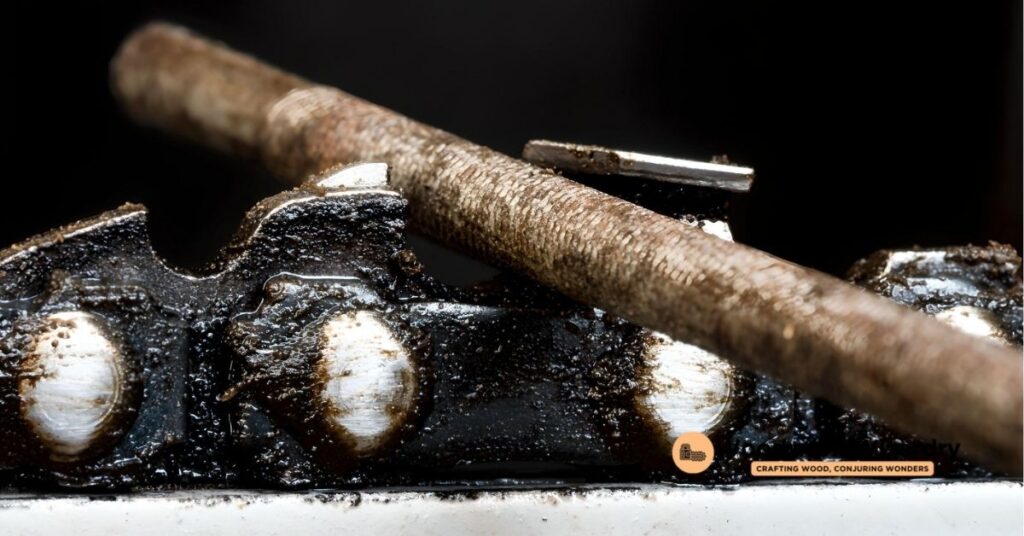
Building on our discussion about the importance of precision in sharpening a chainsaw chain, we’ll now dive into some professional tips that can further ensure your chainsaw’s performance remains top-notch. By following these guidelines, you can maintain sharpness across numerous cutting tasks, further enhancing your chainsaw’s efficiency and longevity.
First, regularly inspect your chainsaw chain for damage. Look for signs such as broken or missing cutters, which can significantly affect your chainsaw’s cutting ability. If damage is present, it’s often more prudent to replace the chain rather than attempt to sharpen it.
Second, clean your chain before and after each use. Sawdust, resin, and other debris can accumulate on the chain and bar, which not only dulls the chain faster but can also pose a safety risk. Use a brush and a degreaser to remove this buildup, ensuring the chain is dry before storage or use.
Third, use a guide when sharpening your chain. Guides help maintain consistent angles across all cutters, contributing to a more uniform and efficient cut. Without a guide, it’s easy to file cutters at varying angles, leading to uneven wear and tear.
Fourth, lubricate the chain regularly. Proper lubrication reduces friction between the chain and the wood, as well as between the chain and the bar. This not only helps maintain sharpness but also extends the life of the chainsaw.
Lastly, store your chainsaw properly when not in use. Keep it in a dry, clean place away from direct sunlight and extreme temperatures. Proper storage prevents rust and corrosion, preserving the chain’s sharpness.
By incorporating these professional tips into your maintenance routine, your chainsaw chain will remain sharp, ensuring your cuts are precise, and your chainsaw operates efficiently for years to come.
Conclusion
We’ve walked through the essentials of keeping your chainsaw chain in top-notch condition. Remember, it’s not just about the immediate sharpness but also about embracing a routine that ensures lasting performance and safety. By following the straightforward steps and professional advice we’ve shared, you’ll not only achieve precise cuts but also extend the life of your chainsaw. Let’s make sure our tools are always ready for the task at hand, maintaining them with care and expertise. Happy cutting!
Related Posts:

